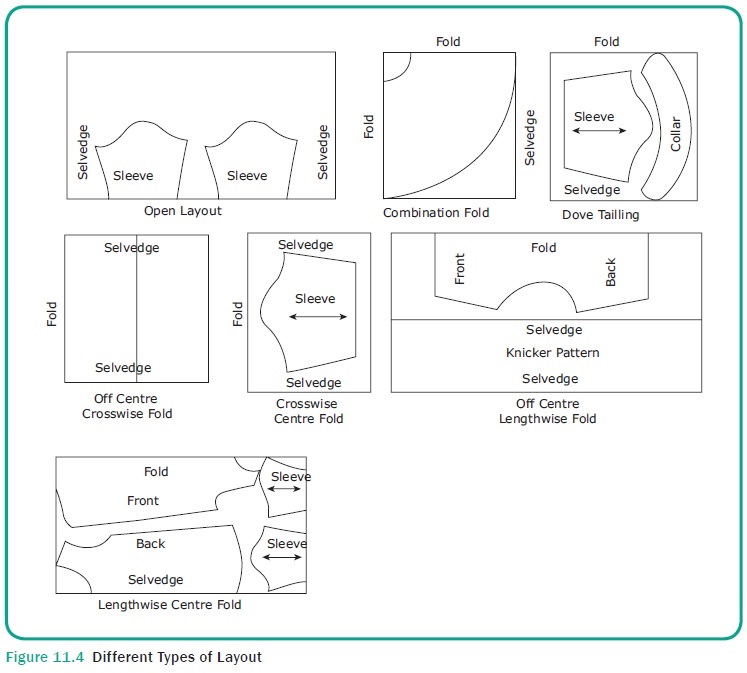Fabric Preparation for Sewing - Pattern Layout and Types of Pattern Layouts | 11th Textiles and Dress Designing : Chapter 11 : Fabric Preparation for Sewing
Chapter: 11th Textiles and Dress Designing : Chapter 11 : Fabric Preparation for Sewing
Pattern Layout and Types of Pattern Layouts
PATTERN LAYOUT
The placement of pattern on the fabric, in an
economical manner, that is without wasting fabric is known as pattern layout.
All the patterns should be arranged prop-erly following grain of the fabric.
Example the bodice centre front will be in straight (lengthwise direction)
grain.
The main points to be considered while laying
patterns are:
·
Press the fabric without any wrinkles before
laying the patterns.
·
Place the fabric on a large or a hard flat
surface, which is easy for work.
·
Place the larger patterns first. Place sim-ilar
pattern together, with same length. Example placement of bodice front and
bodices back next to each other, such that the side seams are close to each
other.
·
Place the smaller patterns in gaps in between the
larger pattern.
·
If pattern is to be cut in more num-ber, example
two sleeve patterns, place them on fold. This concept is not pos-sible when the
fabric has a one way design or when the patterns have dif-ferent front and back
patterns.
·
Keep weight, pencil, pins ready in hand, to draw,
or pin or place weights on patterns, so that it remain in cor-rect position.
Types of Pattern Layouts
Based upon the place-ment of the patterns, the
layouts are classified as
·
Open layout.
·
Lengthwise centre fold.
·
Off-centre length wise fold.
·
Crosswise outer fold.
·
Off centre crosswise fold.
·
Double fold or combination fold.
Open Layout
Open layout is the simplest layout. The fab-ric
is spread on the table and the patterns are laid from left to right one after
the other. This is easy for beginners. No fold is made in this method. It can
be used for all patterns. This is used especially for designs with dif-ferent
left and right patterns.
Lengthwise Centre Fold
The fabric is folded in the lengthwise direction.
The selvedges of both sides are placed one on top of the other and folded in
the middle. The fabric forms a fold at the centre. All folded patterns are
placed along this fold. This fold is also used for different type of frocks,
shirts and blouses.
Off-Centre Lengthwise Fold
The required width needed for the pat-terns is
taken on the fabric and folded in the lengthwise direction. This is com-monly
seen when many small patterns are found in garments. The fold should be
parallel to the selvedge. This is used for many garments from simple baby’s
panty to integrated men’s coats.
Crosswise Outer Fold
Crosswise centre fold is similar to length-wise
centre fold. In this fold, the fabric is folded in crosswise direction. It is
best suited, when the patterns are too narrow to be fitted in the lengthwise
fold. This fold can also be used when special effects are needed like having a
dress with hori-zontal strips using a material with length-wise stripes.
Off Centre Crosswise Fold
The off centre crosswise fold is a layout when
the fabric is folded in the cross grain. The fold is perpendicular to the
selvedge. This fold is used when a part of garment is cut in cross wise grain
for ease or spe-cial effects. Example when collars or yokes are cut on fabrics
with horizontal strips or vertical strips.
Double Fold or Combination Fold
In combination fold the fabric is folded in
lengthwise and crosswise grains together. This layout is used for sari petticoats
and jablas (Figure 11.4)

Related Topics